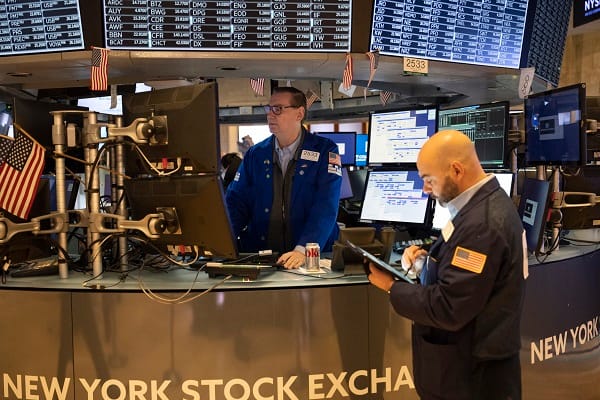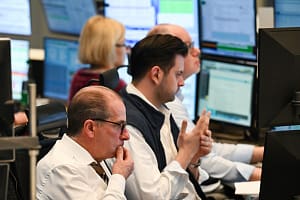During the past week, we witnessed a remarkable rise in the yields of the 10-year US Treasury bonds to the highest levels that we have not seen since the year 2007.
These rises constituted an impediment to the progress of the US stock market, with mixed signals from the bond market.
The 10-year Treasury yields reached 4.328%, at the peak of last week’s gains. However, it returned to decline on Friday, while continuing its gains today in the morning, reaching the level of 4.31% at around 6:00 am GMT.
We also saw a significant decline across the US bond market, with the iShares Core U.S. Fund declining. Aggregate Bond ETF (AGG), which tracks one of the most important indicators measuring the performance of the US bond market, to the lowest levels since November of 2022.
I think the recent rally in bond yields should be read from two different angles, as what drives long-term yields may be different than short-term ones. As the yields of ten-year bonds did not only rise alone, but we have witnessed a continuation of the rise in the yields of shorter-term bonds, most notably the 2-year bonds. Which reached the level of 5.024% at the height of last week’s gains.
While the rises in short-term bond yields are mainly affected by changes in interest rates set by the Federal Reserve and its future expectations. Despite the prevailing expectations that the cycle of interest rate hikes will end this year, recent economic data indicates the possibility of interest rates remaining at record high levels, with the continued stickiness in inflation and the possibility of it staying above its targets for a longer period than expected.
Last week we saw better-than-expected retail sales figures for July despite rising prices and tighter credit conditions. We also saw earlier this month July PPI figures and Average Hourly Earnings which were higher than expected, which may indicate the possibility of remaining inflationary pressures.
As for the rise in bond yields for ten years, it may be due to different reasons than before. I think that those rallies are giving mixed signals to the market. A faster rise in long-term bond yields than short-term yields would reflect market expectations about long-term growth and interest rates.
In the period when we witnessed the Federal Reserve raising interest rates in a rapid and successive manner, we witnessed an improvement in the yields of short-term bonds over the long-term ones, with the markets fearing that the high interest rates will push the economy towards recession, which may push the Fed to reduce them in the future to stimulate growth.
In the current case, I believe that long-term yields are rising faster than short-term yields reflect positive market expectations about future growth and the ability of the US economy to resist recession even with higher interest rates. When the economy is in the growth stage, we may witness a rise in inflation, especially in the case of relatively rapid growth, which may push the Fed in the future to raise interest rates in the long term, which is reflected in the rise in long-term bond yields.
Notably as well, we have seen the gap between the 10-year and 2-year yields continue to narrow to the lowest level since last May at -0.6510%.
While this difference has been in the negative territory since July last year, the fact that this difference is approaching the positive territory at a fast pace may dispel the markets’ fears about the possibility of the economy entering a recession even despite the widely accepted theory in the markets that predicts the possibility of the economy entering a recession during the 12-month period after the inversion of the yield curve and the difference between long- and short-term bond yields entered the negative territory.
On the other hand, I also believe that the rise in bond yields may put more pressure on investment portfolios, especially for banks and pension funds that acquire large quantities of those bonds that are witnessing a decline in their prices, which is what pushes the yields up, which may cause losses to these financial institutions.
While the exacerbation of these losses, especially at the level of regional banks, as happened in the case of Silicon Valley Bank, may lead to the return of concerns about the safety of the US banking system, especially after the downgrading of Moody’s credit rating agency for a number of local banks.






Leave a Comment